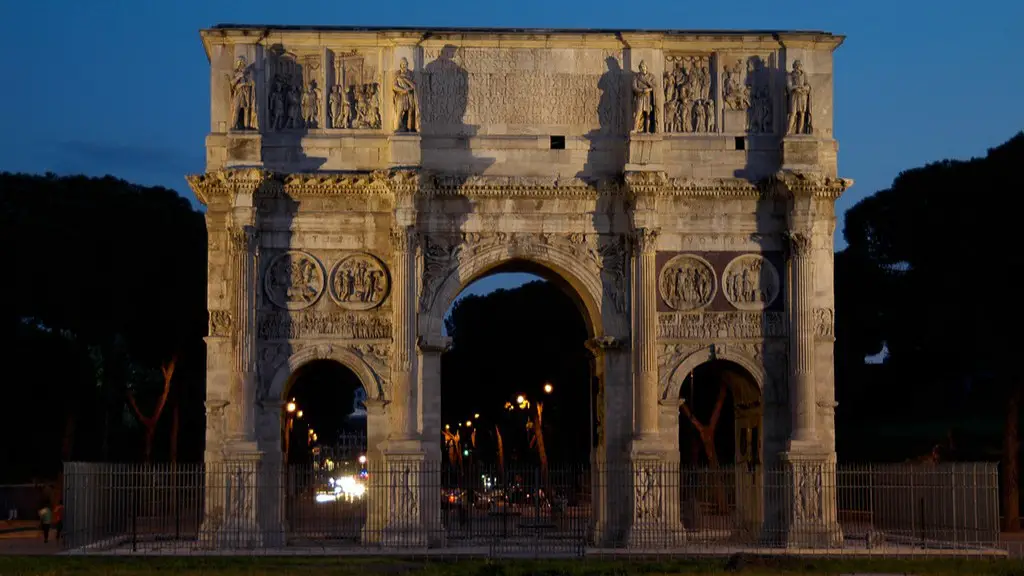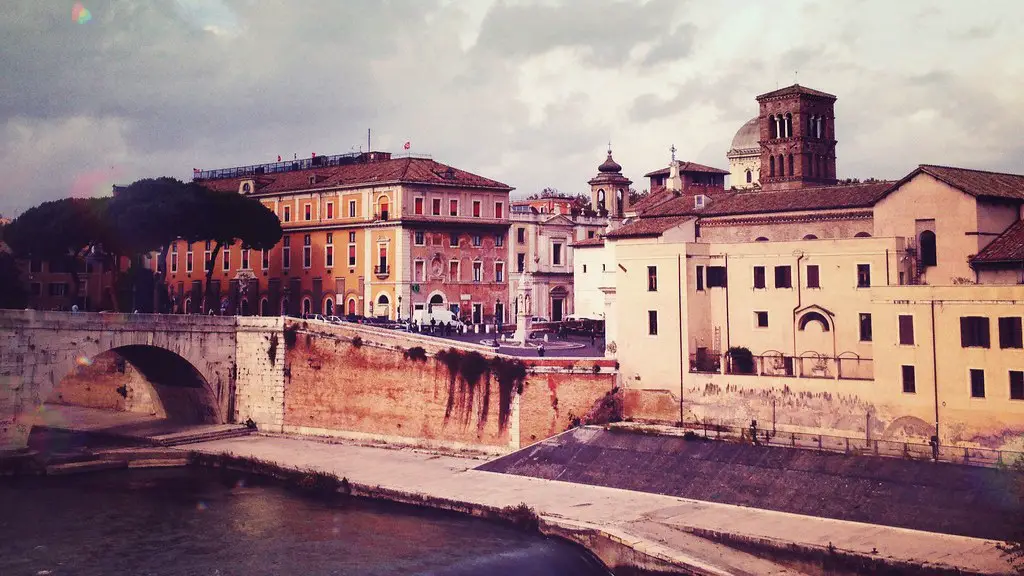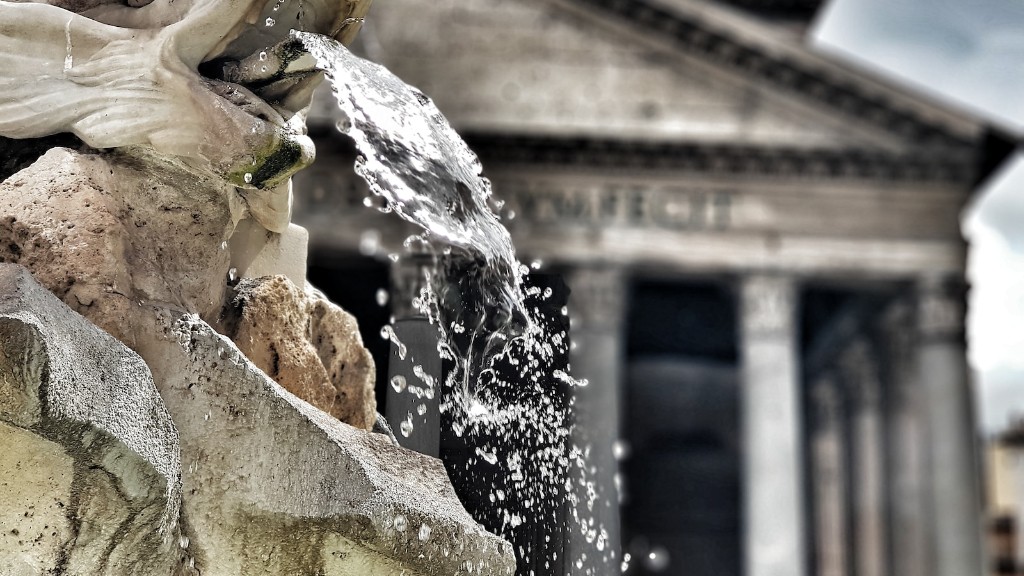Although the United States of America is a relatively young country, it is heavily influenced by the government of Ancient Rome. The Founding Fathers of the United States were well-versed in the classics, and they drew upon the Roman Republic as a model for the newly formed United States of America. Many of the principles of the US Constitution, such as federalism, the separation of powers, and Checks and Balances, are directly inspired by the Roman Republic. In addition, the symbols of the US government, such as the eagle and the Laurel wreath, also have their origins in Ancient Rome.
There are many ways in which Ancient Rome has influenced American government. Ancient Rome was one of the first empires and so their political system was very influential. The two most obvious ways in which Ancient Rome influenced American government are through the executive branch and through the Senate.
The executive branch in Ancient Rome consisted of two consuls. This system was influential in the creation of the American Presidency. Both the President and the Vice President are considered the head of the executive branch in America.
Ancient Rome also had a Senate, which was a group of wealthy landowners who made laws. This system was influential in the creation of the American Congress. The Senate in America is made up of representatives from each state.
How did the Roman Empire influence government?
The Roman Empire was a major shift in power from representative democracy to centralized imperial authority. The emperor held the most power and had control over the army and laws. This shift helped the Roman Empire to become one of the most powerful empires in history.
The separation of powers is a cornerstone of the American system of government, and it can be traced back to classical Greece. The Greek philosophers proposed that government should be divided into separate branches, each with its own distinct area of responsibility. This idea was adopted by the American founders when they created the new nation. The Roman Republic (509-27 BC) served as a direct model for the American government, and the writers of the constitution drew inspiration from the Roman system.
What was Rome’s influence on law and government
The legacy of Roman law is still evident in many modern democracies. The concept of checks and balances, for example, can be traced back to the Roman Constitution. Other concepts like vetoes, separation of powers, term limits, and regular elections also have their origins in Roman law. These principles have helped to shape the modern democratic governments that we see today.
The executive branch of the United States is modeled after the Ancient Roman model. In times of peace, the executive branch comprises the president and vice president, elected by the people for four-year terms. The president is the commander-in-chief of the military and the head of state, while the vice president is the head of the Senate. The legislative branch is made up of the House of Representatives and the Senate, who debate and pass laws. The judicial branch interprets the laws and applies them to individual cases.
How did ancient Rome government influence the modern world?
The Roman Republic was a key factor in the development of the modern day senate, three branches of government, a system of checks and balances, and vetoes. The Roman Republic emphasized citizenship and the participatory role of citizens, both of which are key components of modern day society.
The three branches of government were established by the founders of Rome in order to prevent any one person from having too much power. The executive branch is responsible for carrying out the laws, the legislative branch is responsible for making the laws, and the judicial branch is responsible for interpreting the laws.
Did ancient Rome influence the United States?
Many modern societies have borrowed some aspect of ancient Roman thought, but its shaping influence on the United States has been especially profound. The framers of the US Constitution incorporated Roman ideas about the separation of powers and the need for a senate. These concepts have helped to create a stable and effective government that has lasted for centuries. Roman ideas have also influenced other aspects of American society, such as law, education, and architecture. The enduring influence of Rome is a testimony to the wisdom of its ancient thinkers.
The three areas of government in the United States are the executive, legislative, and judicial branches. The system of checks and balances among these branches was designed by the framers of the Constitution to prevent any one branch from having too much power. Each branch has a unique role to play in the governance of the country, and each is essential to the function of the government as a whole. The President is responsible for the job of Commander in Chief of the military, can appoint ambassadors to conduct foreign policy, and can propose laws to the Legislative Branch. The Legislative Branch is bicameral, consisting of the Senate and the House of Representatives. The Senate is responsible for ratifying treaties and confirming presidential appointments, while the House of Representatives is responsible for passing laws. The Judicial Branch is responsible for interpreting the law and for resolving disputes among the other branches of government. The system of checks and balances among the three branches of government ensures that no one branch has too much power and that the government as a whole can function effectively.
How did ancient Greece influence American government
There are many similarities between the governments of ancient Athens and the United States of America. Both have democratic governments, allow representatives to vote on legislation, and provide equality and fair trials to their people. However, there are also some differences between the two governments. For example, the ancient Athenians had a direct democracy, while the United States has a representative democracy. In a direct democracy, all citizens are involved in the decision-making process, while in a representative democracy, citizens elect representatives to make decisions on their behalf. Nevertheless, the influence of the ancient Athenians can be seen in the United States Constitution and the Bill of Rights, which guarantee certain rights and freedoms to all citizens.
The Roman Republic was a form of government established by the Romans that was copied by many countries for centuries. The government of the United States is based partly on the Roman Republic. The ladder to political power in the Roman Senate was different for the wealthy patricians than for the lower-class plebeians.
How did Roman laws influence us today?
Roman law is one of the most stable and well-developed legal systems in existence and has served as the foundation for many modern legal systems. The civil law system, in particular, is based on the principles of Roman law and has codified them into a system which serves as the primary source of law. This system is extremely effective and has contributed to the development and evolution of modern legal culture.
There were many important Roman gods and goddesses, but some of the most important ones were Jupiter, Mars, and Minerva. Jupiter was the king of the gods, Mars was the god of war, and Minerva was the goddess of wisdom.
What 5 things did Rome give us
The Romans were a highly advanced society, and their innovations have had a lasting impact on the world. Here are 13 things that the Romans did for us:
1. Fast food: The Romans were the first to introduce street stalls and ‘food on the move’, which we now think of as fast food.
2. Advertising and trademarks: The Romans were the first to use advertising and trademarks to promote their businesses.
3. Plumbing and sanitation: The Romans were the first to develop sophisticated plumbing and sanitation systems.
4. Towns: The Romans were the first to develop towns and cities as we know them.
5. Architecture: The Romans were the first to develop classical architecture, which has had a lasting influence on the world.
6. Roads: The Romans were the first to build a system of roads that connected their empire.
7. Our calendar: The Romans were the first to develop the modern calendar that we use today.
8. Democracy: The Romans were the first to develop the concept of democracy.
9. Law: The Romans were the first to develop a system of law that is still used today.
10. Education: The Romans were the first to develop a
Thank you for your question! The Romans did give us sanitation, and their aqueducts were a big part of that. By bringing clean water into cities and towns, and keeping waste away from clean water, the aqueducts helped to keep cities clean. The sewers also played a big role in Roman sanitation, and the water from the aqueducts was used to flush them out.
What did the Romans bring to us?
The Romans were a huge influence on Britain, and even though they eventually left, their impact was long-lasting. They gave Britain new towns, plants, animals, a new religion and different ways of reading and counting. Even the word ‘Britain’ came from the Romans. It’s clear that they had a big impact on the country, and that their legacy is still present in many ways today.
The Romans were one of the most advanced civilizations of their time. They were able to spread their innovations throughout the empire, which had a lasting impact on the western world. Their roads were some of the best in the world and helped to increase trade and transportation. Many of these roads are still in use today.
Why was the Roman government so effective
Rome became the most powerful state in the world by the first century BCE through a combination of military power, political flexibility, economic expansion, and more than a bit of good luck. Rome was able to conquer many other states and build a huge empire. They had a strong army and were able to adapt to changing political situations. They also had a strong economy that allowed them to expand their empire. Lastly, they were lucky enough to have all of these factors come together to make them the most powerful state in the world.
The Roman Republic was a government founded in the 7th century BC that lasted for more than 500 years. It was eventually replaced by the Roman Empire. Its legacy, however, has been felt in many areas of western culture ever since.
One of the most obvious ways the legacy of Rome is still felt today is in our government. The Roman Republic was a model for many of the modern-day republics that exist today, such as the United States of America. Other forms of government, such as monarchy, were also influenced by Rome.
The Roman law system is another area where Rome’s legacy is still evident. The concept of codified law, where laws are written down and interpreted by judges, is something that was first developed by the Romans. This system is still used in many parts of the world today.
Rome’s legacy can also be seen in the language we speak. Latin, the language of the Roman Empire, was the language of educated people for centuries after Rome fell. Many English words are also derived from Latin.
Rome’s legacy is also evident in architecture and engineering. The Romans were responsible forzerous concrete, one of the most important building materials in the world today. They also developed an extensive system
Final Words
The Roman Republic was influential in the formation of the United States government. The Roman Republic was characterized by a strong central government with a Senate and two consuls, as well as a well-developed system of law and governance. This system served as a model for the United States government, which also has a Senate and two consuls. Additionally, the Roman Republic’s commitment to democracy and republic ideals were also influential in the formation of the United States government.
Ancient Rome was a major political power in its time, and its impact on government can still be seen today. The United States Constitution, for example, is modeled after Rome’s system of government. Additionally, various aspects of American culture, such as the legal system and architecture, have been influenced by Ancient Rome.





